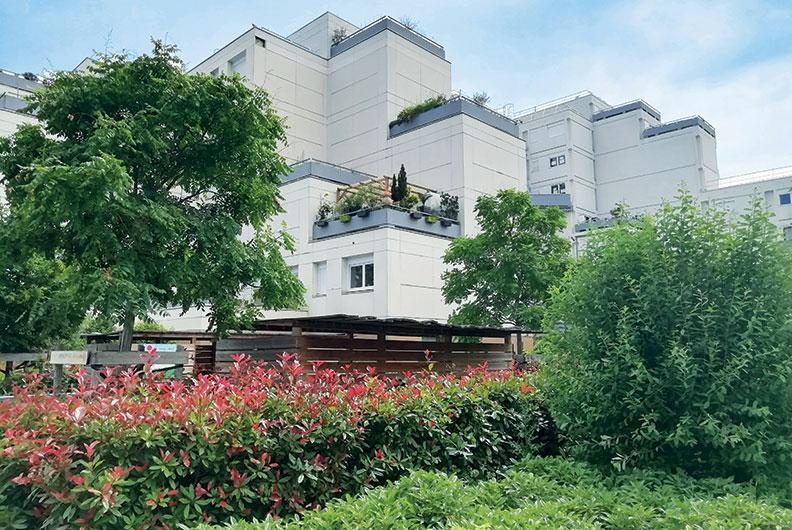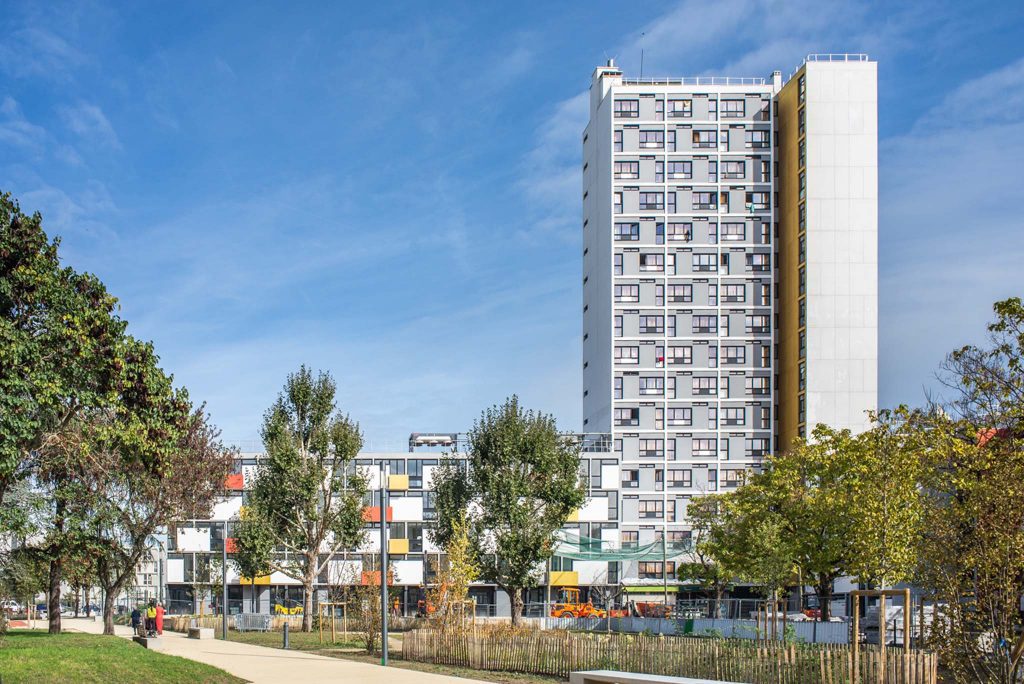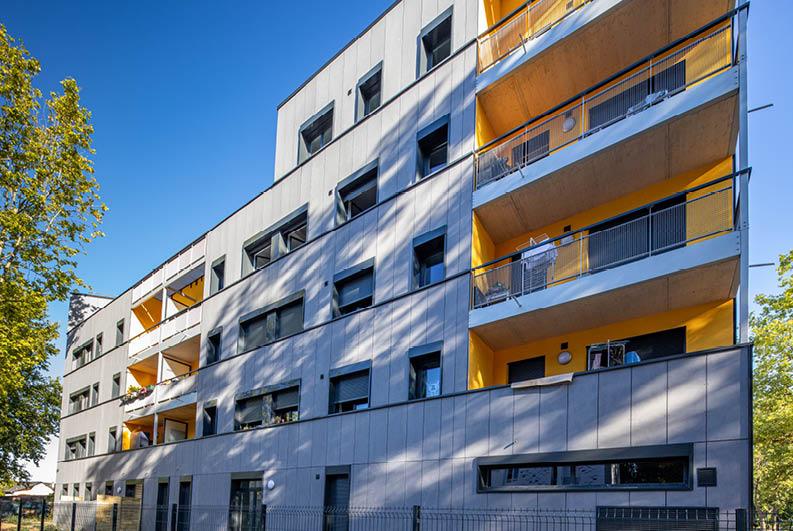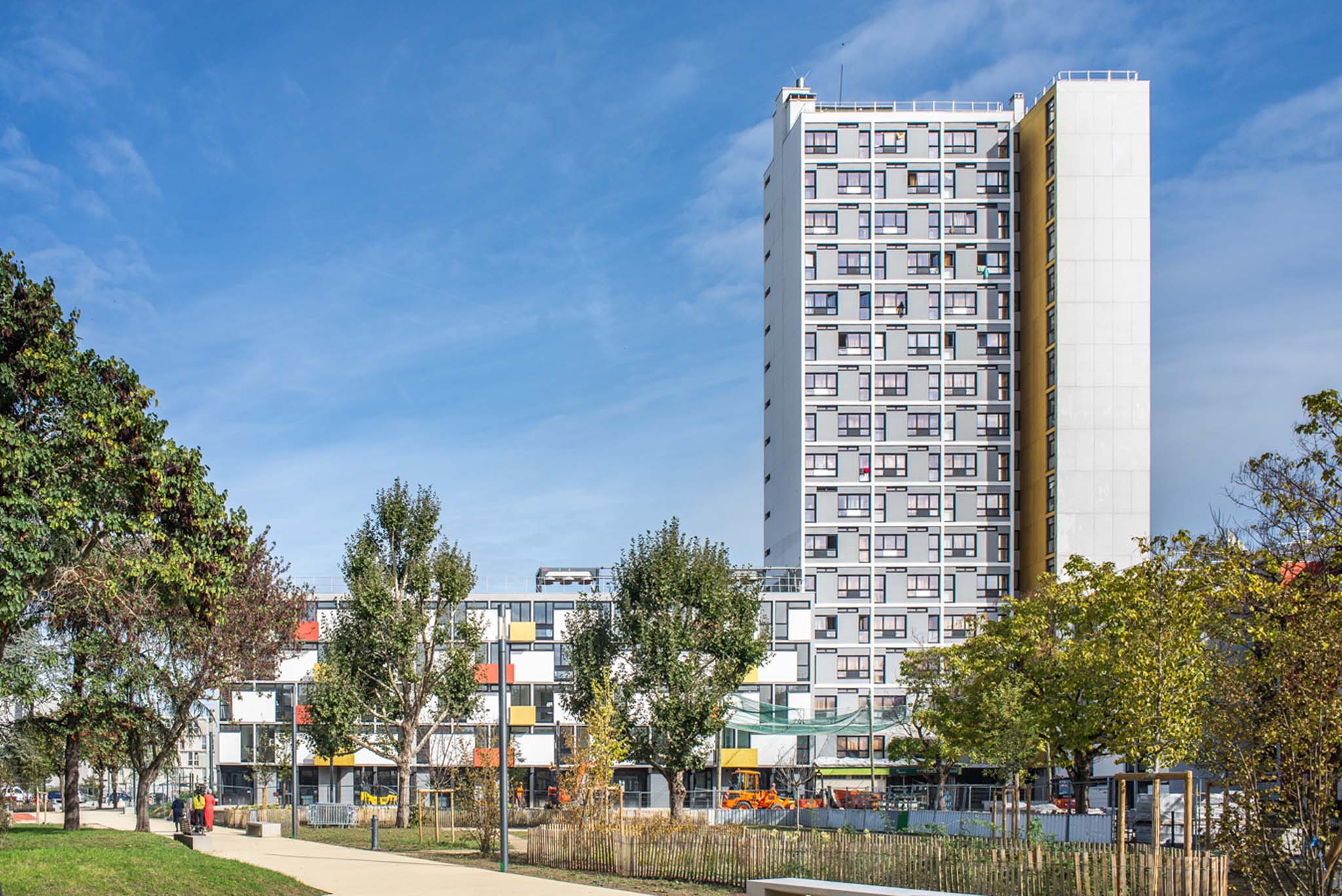As the ANRU celebrates two decades of its creation (1) – registered by the decree of February 9, 2004 -, and through it, the establishment of a national public policy “dedicated to the urban renewal of priority neighborhoods of urban policy” , the national collective with the title “Stop the demolitions of ANRU”, bringing together 50 associations and collectives of residents, architects, urban planners from all over France, met on Wednesday February 7 around various actions, starting with a large meeting in front of the headquarters of the public establishment, followed by a public meeting, a press conference and an inter-collective and association meeting.
Since its creation, the collective actually criticizes the ANRU for supporting a “destructive” urban policy and since the end of 2023 has been circulating a petition with the title “Stop the demolitions of ANRU”, contesting the demolitions caused by the policy of ANRU “at the origin “. of the demolition of 164,000 social housing to rebuild only 142,000.” The national collective denounces “an urban policy that is in fact hostile to social housing” and recalled on this occasion the “common basic right to decent and healthy housing, access to necessary facilities and maintained public spaces, clear traffic routes, to green spaces. “. Above all, the association wanted to highlight the emotional cost that the various demolition projects generate for its residents. The question is also raised whether the rehabilitation of housing is therefore sacrificed in favor of their demolition, bearing in mind the carbon cost of demolition-reconstruction which is much higher than that of rehabilitation. Finally, the quality of buildings was put on the table, ardently defended by architects, witnessing with horror the disappearance of notable architectural works.
“Stop the demolitions”
Among the controversial demolitions, the Mirail neighborhood in Toulouse designed by Georges Candilis and which has 1,421 apartments spread over seven buildings, and whose destruction of buildings should continue until 2030. While the quality of these apartments is studied in all schools of architecture, the dynamics of Demolition is for many specialists “a waste as ecological, economic and human as architectural and heritage”. Remember the transversal residence, bright and spacious – T2 here is 66 m² -, the presence of real data on each of the facades, the inertia of the concrete used for the structures contributing to summer comfort. The collective warns about the cost of demolition-reconstruction, dizzying compared to that of rehabilitation, not to mention land acquisition, which defies all competition for an equivalent number of dwellings in the case of reconstruction. Finally, the plant environment that will suffer the consequences, however guaranteeing islands of freshness in this southern city.
The signatories of the “Stop ANRU demolitions” petition point out, among others, the districts of Butte-Rouge in Châtenay-Malabry, Maladrerie in Aubervilliers and Alma-Gare in Roubaix. They are asking for a rethinking of assessments and renewed faith in architects and urban planners.

The Messager building and its 260 apartments, part of the seven buildings threatened with demolition in Toulouse Le Mirail © Isabel Concheiro
Complex inventory
For its part, the ANRU recalls the underlying problems, including the numerous urban dysfunctions, the often insufficient quality of buildings, the problems of social diversity, motivating in certain cases the financing of demolition-reconstruction. Remembering at the same time that its policy mostly favors rehabilitation over demolition-reconstruction on “a ratio of approximately two-thirds rehabilitation to one-third demolition-reconstruction”. The agency points out that there are badly designed buildings for which rehabilitation – thermal and/or energetic – is not possible to increase their performance, the need to open up certain neighborhoods that buildings tend to close in on themselves and thus free up land, the idea finally that the residents of working-class neighborhoods often live near road intersections characterized by slab urban planning preventing any island of freshness. Finally, the question of urban diversity, a topic that is being discussed.




Rehabilitation of 309 apartments in Vaulx-en-Velin © Nathalie Caron
Rehabilitation of 313 social housing units, La Cité de l’Étoile in Bobigny (Georges Candilis, Guy Brunache,
Shadrach Woods and AlexiJosic) by Groupe Ellipse Architecture © Grégoire Guérin
Rehabilitation of the Serpentin in the Courtillières district (Emille Aillaud) by RVA (architect) and Pierre di Sciullo (graphic designer) © Tilt and Shoot
Construction of social housing in Tremblay-en-France, Grand Ensemble district © Nicolas Vercellino
Climate vulnerability
The climate issue could well unite the two parties, supported in particular by Franck Boutté – Grand Prix de l’Urbanisme 2022 -, speaking at the recent conference organized by the ANRU “Twenty years of urban renewal: thinking about tomorrow’s neighborhoods”. The urban engineer then insisted on the need to “treat” the city, in the eyes of the ecological transition: “The challenges are in the existing one, it is not useful to bet everything on positive energy in new construction. It is no longer a question of super-efficiency,” he emphasizes .” On a national average, 80% of the buildings of 2050 exist today. But how many fit? Almost zero! »
What about the neighborhoods affected by the urban renewal policy? “Here the risks are greater than elsewhere and the vulnerability higher. We must therefore imagine urban forms, hybridizations, thick facades, public spaces, arcades, shadowy figures, refreshing breezes. Because there are climatic inequalities, and where the risks are most large, where populations are most vulnerable, this is where the ANRU mainly works, and where people are the least contributors to the greenhouse effect”. Franck Boutté finally points to “very waterproof sites, very mineralized buildings, built too quickly and sometimes unfinished, with smooth, unprotected facades, small apartments, not high enough under the ceiling, not deep enough, not through”. We will understand that these figures are not very virtuous from the point of view of their climate resistance.
A fair measure?
Case by case seems to be the key word in a delicate situation, first of all for residents, attached to their homes and worried about seeing them disappear, for architects and historians who regret that many sites with construction qualities, remarkable spatial and urban areas are. threatened with destruction, when on the contrary they should be valued, and for everyone to reconcile comfort of life and ecological transition in these most sensitive areas. Constructive exchanges between the collective and the general direction of the ANRU are to be hoped for, which will obviously make it possible to give answers, for the benefit of all.
____
(1) On February 8, the ANRU organized a conference “Twenty years of urban renewal: thinking about tomorrow’s neighborhoods” consisting of a balance of “action in favor of the deep transformation of the poorest neighborhoods”, defining “the effective” . contribution of urban renewal to the original goals of social diversity and ecological transition”, to reposition “the perspectives at a time when crises multiply with increased vulnerability of these neighborhoods and their inhabitants”.
Two programs were implemented in 700 neighborhoods, targeting 5 million inhabitants, with the mobilization of 24 billion euros in aid, which will make it possible to generate almost 100 billion euros of investment.

